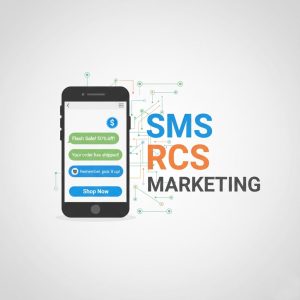How to Design Emails for Mobile Users

Mobile devices have become the go-to for checking emails, with recent studies showing that over 60% of emails are opened on mobile devices. Whether you’re delivering a marketing campaign, a business newsletter, or a simple update, creating emails that perform well on mobile is critical. Emails that don’t look good on a phone can lead to poor engagement, frustrated users, and worse, lost opportunities.
This guide will cover how to design emails that are not only visually effective but also functional and user-friendly for mobile users. By the end, you’ll know the steps to craft mobile-optimized emails that boost your engagement rates.
Why Mobile Email Design Matters
Email consumption on mobile is skyrocketing
With the majority of users reading emails on their phones, poor design can alienate a significant audience right off the bat. Bulky layouts, unreadable text, or oversized images can lead to users deleting your email without reading a single word.
First impressions count
Your email is often your first point of contact with users. Poor mobile design can make your brand appear outdated, unpolished, or out of touch with user expectations for convenience and ease.
The link between mobile optimization and conversions
Emails optimized for mobile don’t just look good; they perform better. A well-designed mobile email leads to higher click-through rates (CTR), better customer engagement, and ultimately more conversions.
Now that we know why designing for mobile is crucial, let’s break down how to do it effectively.
Tips for Designing Emails for Mobile Users
Keep Subject Lines Short and Sweet
Users on mobile devices often glance at subject lines before deciding to open an email. Aim for 40-50 characters or less. Punchy, concise subject lines stand out amidst crowded inboxes.
Example
Instead of saying, “Discover 10 Strategies for Healthy Living This Month,” try, “10 Quick Health Tips You’ll Love.”
Use a Mobile-First Layout
Mobile screens are small, and most users scroll vertically. Start with a mobile-friendly layout that focuses on a single-column design. This ensures your content is easy to read without users needing to pinch, zoom, or rotate their screens.
Key points for mobile-first layouts:
- Single column design for simplicity.
- Ensure all content fits within a 320-500px width.
- Stick to a logical flow from top to bottom.
Choose Readable Fonts and Sizes
Tiny fonts make emails hard to read on mobile optimize screens! Stick to a minimum font size of 14px for body text and at least 20px for headlines. Choose clean, sans-serif fonts like Arial or Roboto for better readability. Avoid overly elaborate fonts that can strain the reader’s eyes.
Colors and contrast
Ensure sufficient contrast between your text and background. Dark text on a light background (or vice versa) enhances readability in various lighting conditions.
Compress and Optimize Images
Large images can slow down load times, frustrating mobile users who expect near-instant results. Use compressed images without compromising quality. Additionally:
- Use responsive images to adjust size automatically for various screen sizes.
- Give every image an alt text, so users on slow connections understand its purpose.
Tip: Test image-heavy emails for load speed before sending.
Craft a Clear and Eye-Catching Call to Action (CTA)
Your CTA is one of the most important elements of your email. On mobile, CTAs should:
- Use large tappable buttons (at least 44px by 44px).
- Be placed where they are easily seen without scrolling.
- Have actionable, concise text like “Shop Now” or “Sign Up Free.”
Example of a mobile CTA button layout:
“| Learn More |”
Prioritize Scannable Content
Mobile users skim content quickly. Make your email easy to scan by:
- Using short paragraphs (2-3 sentences max).
- Incorporating bullet points and numbered lists to break up text.
- Highlighting key actions or offers in bold.
Header hierarchy matters
Use headers (H1, H2) to structure content logically, making it quick to follow.
Test Responsiveness Across Devices
Different mobile devices and platforms (iOS, Android, Gmail app, etc.) may render emails differently. Use tools like Litmus or Email Marketing on Acid to preview your email on various screen sizes and operating systems.
What to test:
- Font rendering
- CTA placement
- Image scaling
- Layout alignment
By testing across devices, you reduce the risk of sending an email that doesn’t display correctly.
Don’t Forget the Preheader Text
The preheader text acts as a mini-preview alongside the subject line. For mobile readers, well-crafted preheader text helps drive open rates. Opt for enticing or helpful copy that complements your subject line.
Example Preheader Text
Subject Line: “The secret to brewing better coffee…”
Preheader Text: “Grab these brewing tips for the perfect cup!”
Minimize Email Load Time
Emails that take too long to load often get abandoned. Keep your load times under 3 seconds by reducing heavy elements like large file sizes, custom scripts, or excessive visuals.
Utilize bulletproof buttons
Instead of relying on images for buttons, create them using HTML/CSS to ensure they display perfectly, even if images are disabled in the user’s email app.
Ensure Accessibility for All
Creating an inclusive email ensures you engage all users:
- Use descriptive alt text for users reliant on screen readers.
- Stick to high-contrast colors for readability.
- Include a text-only version of your email for users who may have accessibility needs or limited network connections.
Bonus: Accessibility = Better UX for everyone!
Common Mobile Email Design Mistakes to Avoid
- Long subject lines that truncate awkwardly in mobile inboxes.
- Overloading with images instead of text, which may not load properly.
- Ignoring font readability and sticking to small text impossible to skim.
- Using multiple columns, which can scramble alignment on mobile.
- Overusing hyperlinks instead of using bold CTAs.
Avoiding these pitfalls ensures your emails aren’t ignored or deleted.
Next Steps You Should Take
Designing emails for mobile users is no longer optional. It’s essential for any business or marketer to engage effectively. By implementing these strategies:
- You’ll capture attention, communicate clearly, and boost overall engagement.
- Your mobile-friendly emails will translate into higher click-through rates, better UX, and ultimately, customer loyalty.
Need help creating effective emails that perform on mobile every time? Stay ahead of your competitors by incorporating user-friendly templates and tools. Platforms like Litmus and Canva offer resources tailored for email design.
Get started today, and watch as your engagement metrics climb with every perfectly crafted email!





